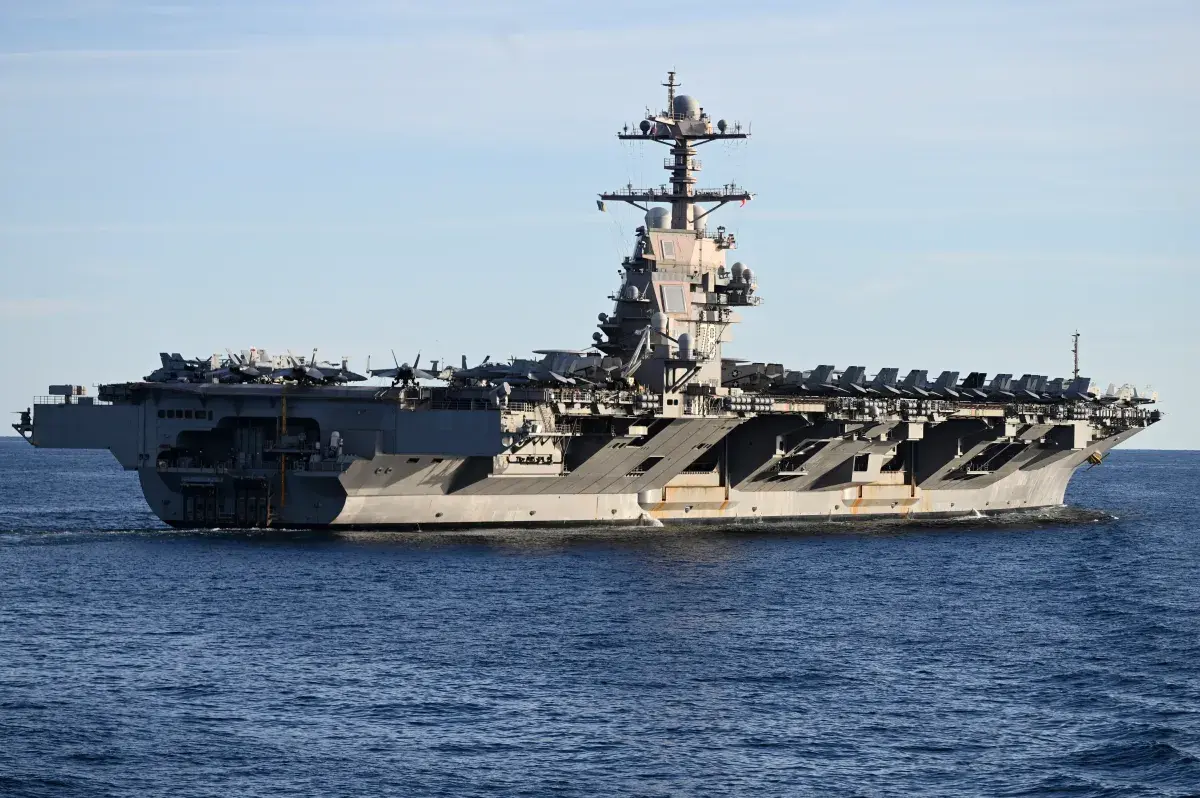
The United States Southern Command (SOUTHCOM) has significantly ramped up its military posture in the Caribbean, following President Donald Trump’s counter-narcotics directives. The world’s largest nuclear-powered aircraft carrier, the USS Gerald R. Ford, and the accompanying strike group entered the area of responsibility of the Fourth Fleet, SOUTHCOM’s naval operational command, on Tuesday.
Why It Matters
Observers say these are not just vessels for intercepting drug boats—they are heavily armed naval forces capable of operations near coastlines and around islands. This places pressure on Venezuelan President Nicolás Maduro’s government in one of the most dangerous standoffs between Washington and Caracas in years, though Trump’s plans for the South American nation remain unclear.
SOUTHCOM lacks comprehensive bases in South America, meaning the U.S. is rebuilding logistics via the Caribbean, notably via its territory of Puerto Rico—which, along with the Bahamas and the U.S. Virgin Islands in the Caribbean region, falls under Northern Command (NORTHCOM)—to project power.
SOUTHCOM, however, may operate from these territories for regional missions.
What Is SOUTHCOM Area?
SOUTHCOM’s area of responsibility covers the land mass of Latin America south of Mexico, the waters adjacent to Central and South America and the Caribbean Sea, a region the U.S. says accounts for roughly one-sixth of the global territory covered by U.S. regional combatant commands. This includes 31 countries and 12 territories under special sovereignty.
In Central America, those are Belize, Costa Rica, El Salvador, Guatemala, Honduras, Nicaragua and Panama. El Salvador hosts one of two U.S. Cooperative Security Locations (CSLs) in Latin America, located at Comalapa Air Base. In Panama, Washington recently expanded defense cooperation. In Honduras, the U.S. maintains a long-standing presence at Soto Cano Air Base, but the Honduran government has suggested ending this amid tensions over Trump’s immigration policies.
In South America, countries include Argentina, Bolivia, Brazil, Chile, Colombia, Ecuador, Guyana, Paraguay, Peru, Suriname, Uruguay and Venezuela. Colombia and the U.S. have long cooperated on counter-narcotics and regional security. However, Bogota has expressed concern over U.S. boat strikes, excessive military buildup in the region and intervention in Venezuela.
In the Caribbean, the nations covered are Antigua and Barbuda, Barbados, Cuba, Dominica, Dominican Republic, Grenada, Haiti, Jamaica, St. Kitts and Nevis, St. Lucia, St. Vincent and the Grenadines and Trinidad and Tobago. Cuba stands out for its historical adversarial relationship with the U.S.
What People Are Saying
Chief Pentagon spokesperson Sean Parnell, as quoted by SOUTHCOM Tuesday: “These forces will enhance and augment existing capabilities to disrupt narcotics trafficking and degrade and dismantle Transnational Criminal Organizations.”
A U.S. official told The War Zone defense website Friday: “There are site surveys ongoing to see if more military assets should be sent to the region.”
A spokesperson for the U.S. Southern Command told Newsweek by email on Wednesday: “Regarding the roles of U.S. assets, units, and personnel already in our geographic area of responsibility, they are directly supporting U.S. Southern Command’s mission, U.S. Department of War-directed operations, and the U.S. president’s priorities.”
What Happens Next
With Venezuela placing its armed forces on high alert amid rising tensions with the U.S, the situation enters a critical phase where any action could spark direct confrontation.
